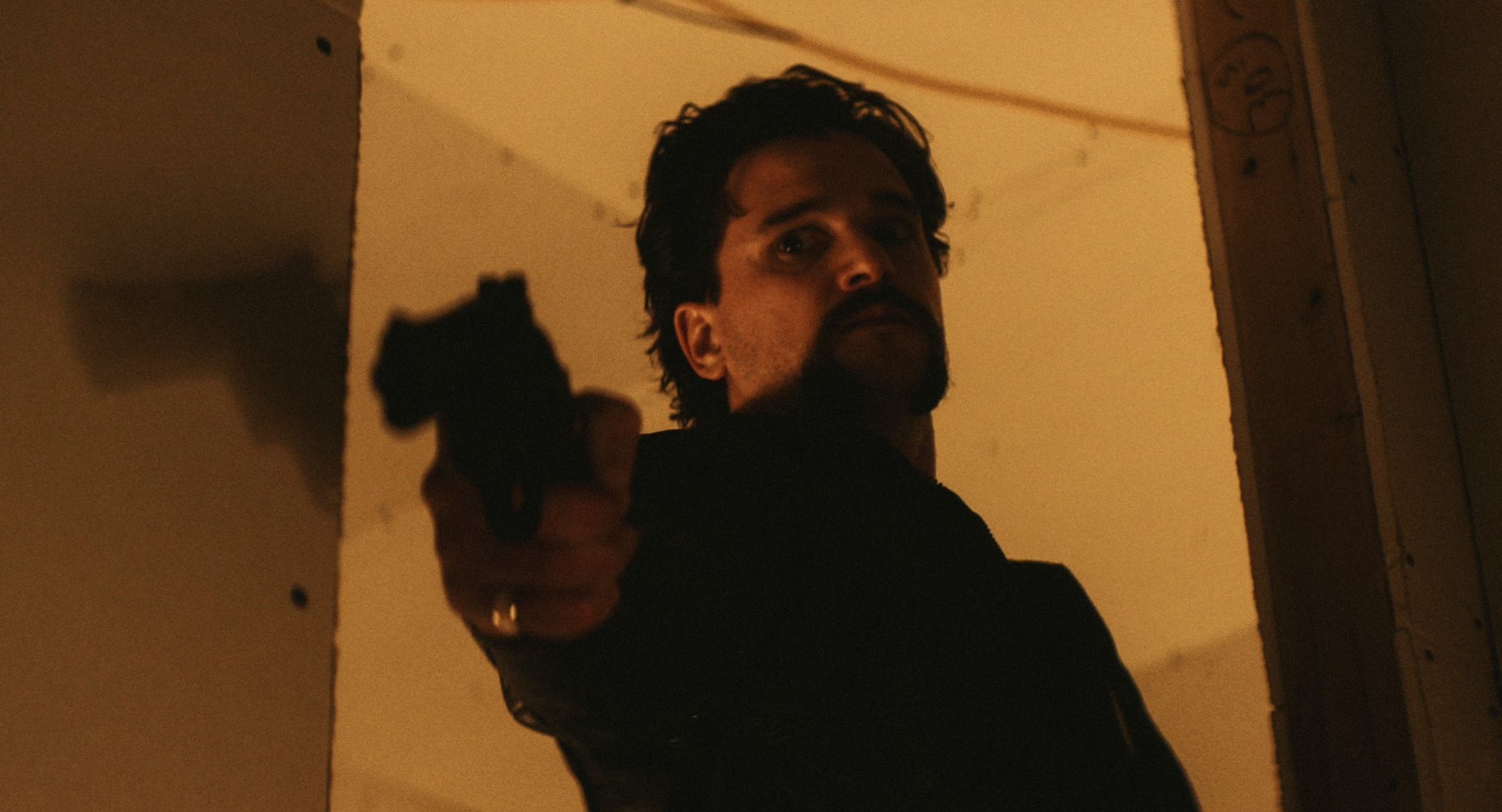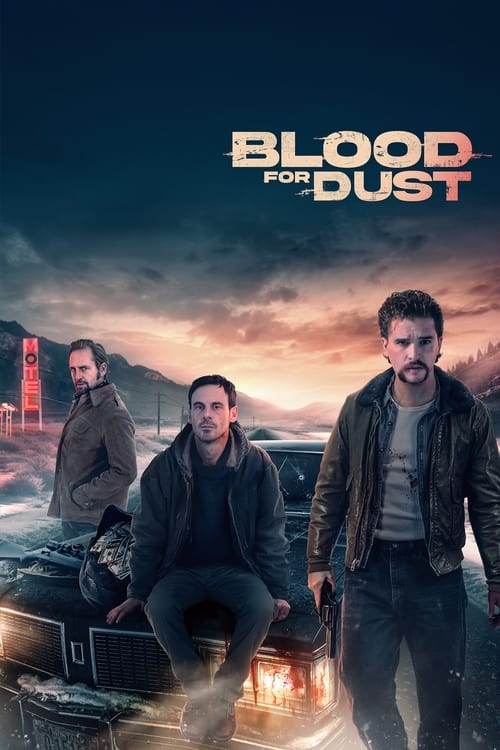Blood for Dust – Film Review
Published April 19, 2024

Blood for Dust plunges into the grim underbelly of illegal arms dealing, setting its scene amidst the tension and volatility that defines the lives of those ensnared in such a world. Directed by Rod Blackhurst and penned by David Ebeltoft, the film crafts a narrative brimming with suspense, violence, and fleeting moments of camaraderie, stitched together in a gritty fabric characteristic of action crime thrillers. With a notable ensemble cast led by Scoot McNairy, Kit Harington, and Josh Lucas, it teases the potential for an explosive cinematic experience. However, it somewhat falters, hovering in the gray zone where its aspirations and actual deliverance diverge.
At the heart of Blood for Dust is the ill-fated partnership between Cliff (McNairy) and Ricky (Harington), with McNairy offering a compelling portrayal of a desperate everyman ensnared in an escalating crisis. His descent from a struggling traveling salesman to a beleaguered criminal is palpable, drawing empathy from the audience with his beleaguered resilience. In contrast, Harington’s Ricky is a whirlwind of charisma and unpredictability, embodying the recklessness and flair of someone who’s thrived in the perilous balance of gun-running. Josh Lucas’s cartel boss, John, completes this trio with a chilling performance that exudes menace and control, a stark contrast to the chaos Ricky represents.
However, where Blood for Dust promises a nuanced dive into its character’s psyches, it somewhat stumbles. Ricky’s motivations and the transformation of Cliff are often overshadowed by the film’s relentless pacing and a script that occasionally leans more towards spectacle than substance. The depth of their desperation and the weight of their choices sometimes feel lost in translation, reduced to mere footnotes amidst the flurry of action sequences and bloodshed.
The action sequences themselves, while undeniably thrilling and well-orchestrated, occasionally veer into the realm of excess, sacrificing the film’s potential for a more grounded and haunting examination of its themes. The directors’ penchant for style is evident; there’s a certain aesthetic pleasure in the way violence is choreographed and executed. However, this stylistic prowess can sometimes overshadow the narrative’s need for quieter, more introspective moments that could have lent Blood for Dust the emotional weight it intermittently hints at but seldom fully embraces.
Cinematography is one of the film’s stronger suits, with the tri-state area’s diverse landscapes captured in a manner that evokes a hauntingly beautiful backdrop to the grim tale unfolding. The juxtaposition of serene vistas against the chaos of Cliff and Ricky’s escapades serves to amplify the tragedy of their spiral, though this visual storytelling at times feels like a solitary beacon in a sea of narrative shortcuts.
Supporting performances, notably from Nora Zehetner and Ethan Suplee, provide layers to a story that, at its core, revolves around broken individuals striving for redemption or ruination. Zehetner’s Amy offers a glimpse into the personal stakes, grounding the larger-than-life chaos in the painfully human. Similarly, Suplee’s Slim delivers a memorably gritty performance, adding a necessary dose of humanity to the narrative.
Despite its strengths, Blood for Dust doesn’t entirely escape the pitfalls of genre conventions, at times slipping into predictable plot turns and character arcs. The struggle for originality is palpable, as it endeavors to weave complexity into its narrative but finds itself entangled in the web of action thriller tropes. The result is a film that feels like it’s on the cusp of saying something profound but often pulls its punches, retreating to the safety of spectacle over depth.
Moreover, the film’s attempt to critique the very cycle of violence and desperation it depicts can feel undercut by its own glorification of these elements. The ending, in particular, might leave audiences divided; while aiming for a cathartic climax, it might instead prompt reflection on whether the journey justified its conclusion, offering a resolution that feels somewhat unearned.
For fans of action-packed crime thrillers, Blood for Dust delivers the adrenaline and visual flair expected of the genre, bolstered by strong performances from its lead actors. Yet, it ultimately feels like a missed opportunity to delve deeper into the emotional and psychological landscapes of its characters. As it stands, it’s a commendable effort that captivates and entertains but stops short of leaving a lasting imprint. Whether Blood for Dust will be remembered as a thrilling but superficial journey into the world of gun-running, or a missed chance for a more impactful narrative, remains a matter for individual interpretation. In its quest for a balance between action and introspection, it achieves moments of brilliance but also falls prey to the shadows of its own ambition.
